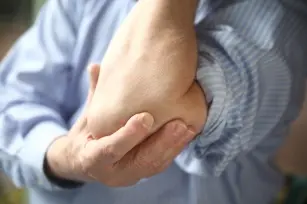
The causes of elbow pain are sometimes obvious to us, other times unknown. The most common cause, however, is inflammation of the lateral epicondyle of the humerus. Although it sounds complicated, it simply means a sports injury to the elbow joint. Orthopedists encounter this type of disease most often. so-called “Tennis elbow” is the result of a sudden injury or repeated, gradual damage to the forearm. The tendons become engorged, and this causes pain. How to deal with elbow pain?
Of course, it’s best to see a doctor. If the pain is severe and chronic, it certainly needs to be done as soon as possible. During the examination, the specialist should pay attention to any deformities, swelling, shape and mobility of the elbow. Very often this is enough and does not require additional research. Changes in the elbow joint are usually quite obvious and easy to detect.
Tennis elbow is not the only cause of pain. Other reasons include:
- Joint disorders – such as osteoarthritis, mechanical trauma, or inflammation.
- Inflicted pain – that is, radiating from the neck and shoulder area.
- Periarticular disorders – i.e. inflammation of individual elements of the elbow, e.g. lateral epicondylitis, medial epicondylitis.
In the case of an elbow dislocation, it manifests itself slightly differently – it is caused by a strong injury. There is often swelling and bleeding from the injured site. There is pain when moving the forearm, coordination is difficult.
How to alleviate the pain?
Elbow pain increases when straightening the wrist and the elbow itself. Neurological symptoms and nerve irritation are common. What does the treatment look like? Splints are most commonly used to immobilize the elbow joint. Thus, they prevent the damaged part from being stressed. The elbow is immobilized with a sling, useful when a cast is required. The sling should be characterized by a breathable material from which it is made and a thumb grip. This will make it easier to keep the limb in the correct position.
In the case of light, minor sprains, we use home remedies such as painkillers and anti-swelling agents, as well as cold compresses, e.g. ice.
Ultrasound therapy is also used very often. In other cases, steroids are injected – of course locally, usually in the vicinity of tendons, ligaments, in the vicinity of the epicondyle, or into the bursa itself.
When we are dealing with a very severe sprain, there is nothing else to do but report to the doctor. If the ligaments have been strained, a short-term half-cast immobilization will most likely be used to prevent elbow instability. The neck and shoulder are often examined to rule out the possibility of referred pain.









